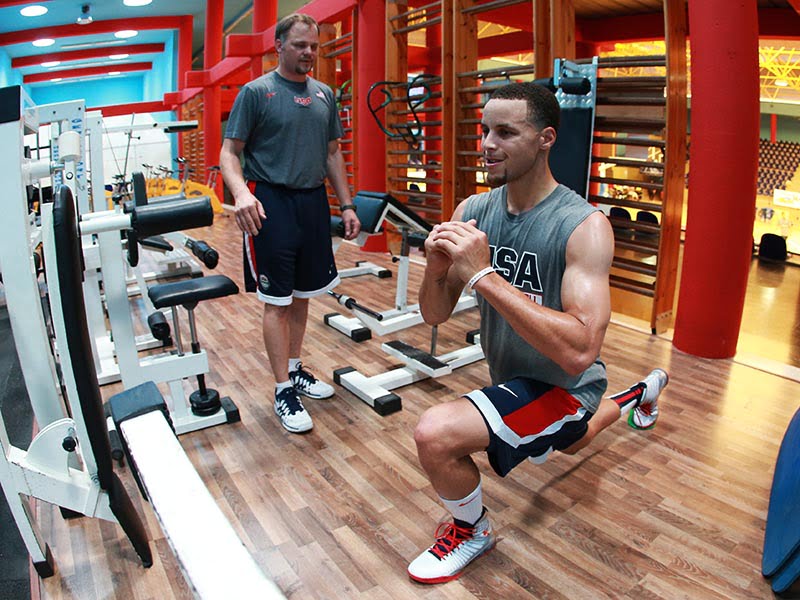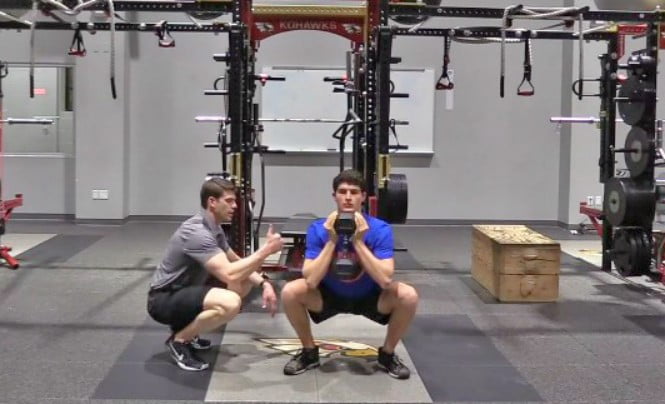The Ultimate Guide To Weight Training For Basketball Players By Rob Willemse
Weight training has become a vital supplement to basketball conditioning and development programs. Once thought to lead only to a muscle-bound, uncoordinated individual, carefully controlled experiments in recent years have shown that a program of weight training can contribute to the overall athletic development of the athlete in all sports.
Advantages of Weight Training for Basketball Players
Among the advantages to be derived from a sound program of weight training in basketball are:
- increased jumping ability.
- Increased strength for rebounding work.
- Speed improvement.
- Improvement in endurance.
- Remedial exercise.
One of the pioneers in the weight training experimentation for basketball players was the late Bucky O’Connor of the University of Iowa. Springfield College has contributed much scientific data to support the use of weight training and many schools and colleges all over the nation have instituted programs in recent years that are proving of great benefit to their players.
Most studies show that players average an increase of approximately three inches in jumping ability while some players have improved as much as six and seven inches. Increased leg strength has been shown to improve speed. Endurance, a valuable quality in such a fast-moving game as basketball, can be improved also.
It is difficult to measure improvement in rebounding ability since so many variables exist, it is rather logical that the proven increase in strength will be beneficial in the rugged work around the boards. Trainers have long recognized the value of carefully planned weight programs for remedial work, especially in strengthening the knee.
Equipment Necessary
A minimum of equipment is needed to install a weight training program. If the budget does not allow the purchase of barbells, an exercise program can be planned that will require dumbbells only. However, the more equipment available the less time the program will take.
Minimum equipment:
- Four (4) adjustable dumbbells with sufficient poundage.
Recommended equipment:
- Two (2) barbells with sufficient poundage.
- Four (4) adjustable dumbbells with sufficient poundage.
- One (1) Pair of Iron Boots.
- Two (2) horizontal benches.
- One (1) Weight Stand (for holding heavy weights).
- Mats to protect the floor.
General Rules and Safety Regulations
- Warm up properly using calisthenics or a light barbell.
- Start with light weights and gradually increase poundage. When the lifter can lift ten to twelve repetitions, increase poundage.
- Make certain collars are on the barbells tightly.
- Use the legs to lift, not the back. The correct lifting position should be emphasized—feet on the same line, head up and back straight.
- Use spotters when lifting heavy weights.
- Use chalk on your hands to prevent weights from slipping, particularly when lifting heavy weights.
- Rest from three to five minutes between exercises.
- Supervision is important especially until players become thoroughly familiar with safety precautions.
When to Lift Weights
It is recommended that weight training be performed three days weekly. Because of the five-day school week, most teams plan their weight training programs for Monday, Wednesday, and Friday.
If practice is held regularly on Saturday, half of the squad may exercise on Monday, Wednesday, and Friday with the other half exercising on Tuesday, Thursday, and Saturday. This conserves time and is particularly helpful if equipment is minimal.
Recommended Weight Training Program
- Toe Raise:- Stand with feet shoulder-width apart with toes on a 2″ by 4″ board. The barbell should be held behind the head on the shoulders with the palms of hands facing upward. Lifter raises onto toes and returns body weight to heels. Start with 75 pounds with three sets of ten repetitions.
- Clean and Press:- Stand with feet shoulder-width apart. The barbell should be held in front of the thighs with palms facing in. The weight is lifted in a continuous motion until the arms are fully extended over the head. The weight is returned to the starting position. Start with the weight of 40-50 pounds with two sets of ten repetitions.
- Half Squat:– Stand with feet shoulder-width apart. The barbell should be held behind the head on the shoulders with the palms of hands facing upward. The lifter does a half knee-bend and returns to an upright position. Start with the weight of 40-50 pounds with two sets of ten repetitions.
- Two-arm Curl:- Stand with feet shoulder-width apart. The barbell should be held in front of thighs with palms facing outward. Lifter bends both elbows in lifting the bar in an arc to a position in front of the chest. Return to starting position. Start with a weight of 40-50 pounds with three sets of ten repetitions.
- Bench Press: The lifter lies in a supine position on the bench. The barbell should be held on the chest with palms facing upward. The weight is lifted by extending the arms upward as far as possible. Return to starting position. Start with a weight of 40-50 pounds with three sets of ten repetitions.
- Rowing:- Stand with feet slightly more than shoulder-width apart. Bend the body at the trunk and hold a barbell with arms fully extended downward. Palms should face in toward the body. Bending the elbows, lift the weight upward in a circle and a rowing motion returning the weight to the starting position. Start with 40-50 pounds with two sets of ten repetitions.


